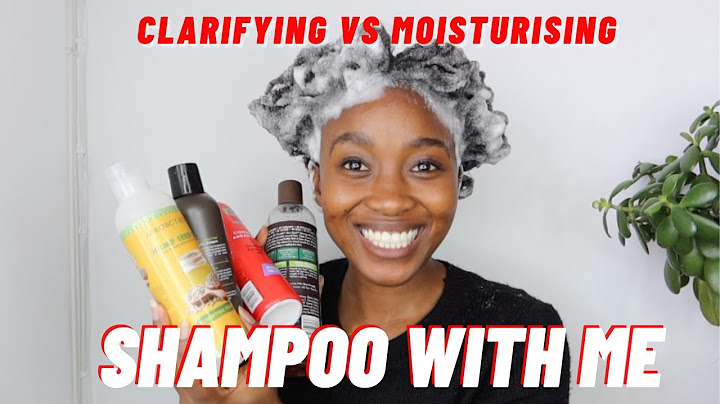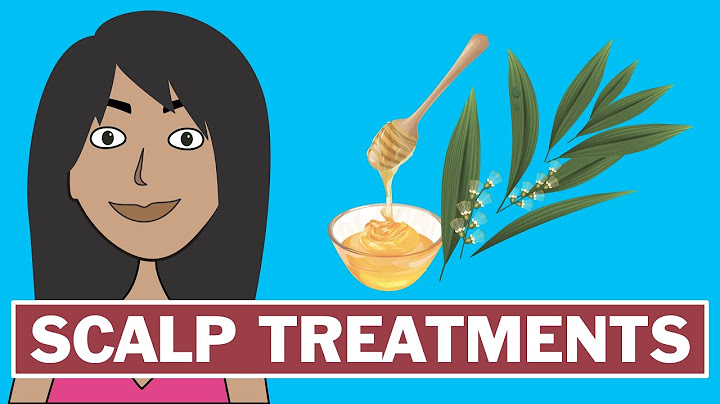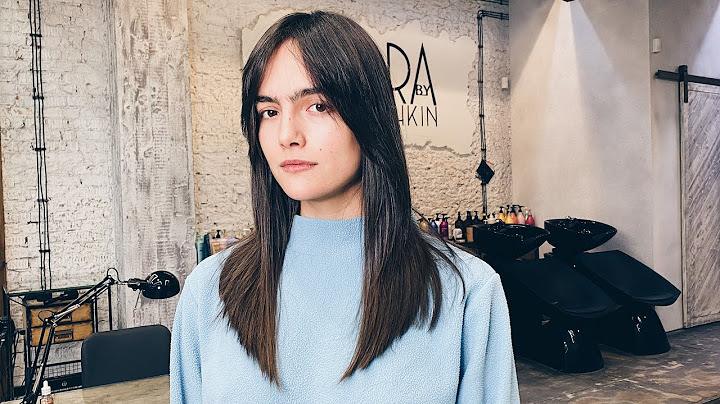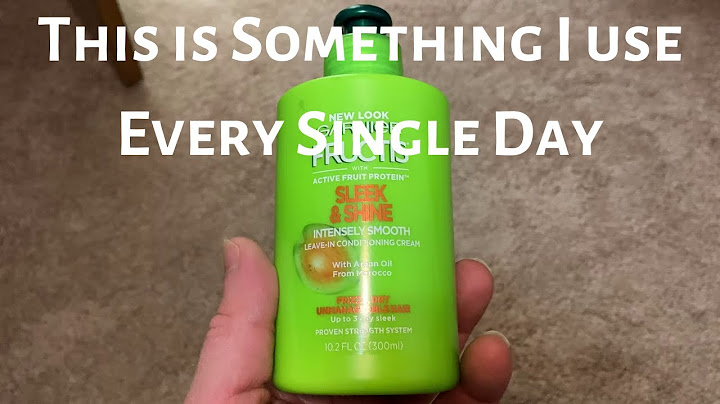By Choya Randolph Show
 For most of my natural hair journey, I slept on hair butters. Don’t be like me because hair butters are that girl. For my naturals with high porosity hair, you may want to put the oil down and pick up a hair butter. Even if you don’t have high porosity hair, hair butters are great for the winter to give your hair an extra boost to retain moisture. So what are hair butters? Hair butters are an organic blend of unrefined butters and natural oils. When doing the LOC or LCO method, you can replace your oil with a hair butter. If you don’t know about the LOC method, it’s an ideal method for naturals to moisturize our hair. The name is an acronym representing the order of products to put in your hair. The LOC method refers to using a liquid, oil, then cream and the LCO method refers to using a liquid, cream, then oil. Both methods work, it’s about finding what works best for you. When it comes to the LOC or LCO method, each product has a job of its own. The liquid is usually a water-based leave-in conditioner meant to condition and moisturize the hair. The oil locks in that moisture and the cream prevents the moisture from leaving. Because hair butters are a combination of oil and butter, it can be an oil alternative. Hair butters are more than just an oil but a butter as well. Its thick consistency can give your hair a much needed boost, especially during the winter. Hair butters can not only seal in your moisture but also prevent breakage. One of the great things about hair butters is that it’s all natural and organic. However, when going to the beauty supply store, the hair butters may have a bunch of ingredients that aren’t organic at all. In fact, can you even pronounce all of the ingredients? If you can’t pronounce it then it probably isn’t all natural. For those who want to know exactly what they’re putting in their hair, let’s break down hair butters. Again, hair butter is just oil and butter. If you’re a seasoned natural, you probably know the tea on oils but butters can be a little complicated. There are three butters that you can use in your homemade hair butters: shea butter, cocoa butter, and mango butter. Of course there are more butters out there but let’s focus on these three. Shea butter is probably the butter you’ve heard of. Sis is popular. It is extracted from the nut of the African shea tree. It’s known for providing moisture to the hair while absorbing into the scalp without clogging the scalp. Cocoa butter is something we’ve all probably used on our skin. If it can benefit our skin then it can probably do a lil something for our hair. Cocoa butter is extracted from the cocoa bean. It of course gives us the chocolate we all love but it can also moisturize our hair and combat frizz. Then there’s mango butter which is extracted from mango kernels. It can reduce breakage, soften the hair, and smooth split ends. All of these butters smell amazing and moisturize natural hair but, they do have their cons. Shea butter tends to be thick so it can be harder to use. Cocoa butter can lean on the greasy side. Mango butter can be expensive and perhaps inaccessible. However, finding what butter works best for you is part of the natural hair journey. Now that you know what butters you can use, you can start mixing and blending as you please. Once you add an oil of your choice, you have officially made your own hair butter. What’s great about making your own hair butter is that you can add additional ingredients for that razzle dazzle. A recipe I like to follow is using a cup of mango butter, about two tablespoons of olive oil, a chunk of aloe vera gel, and a couple drops of peppermint oil. If you don’t feel like chopping up an aloe vera plant, you can use about a tablespoon of organic aloe vera juice. I like this recipe because olive oil is my oil of choice. I use extra virgin olive oil because it’s unrefined and reduces scalp irritation. I like mango butter because its consistency tends to be easier to apply to my hair. Aloe vera gel works as a great conditioner, reduces dandruff, combats hair loss, and defines my curls. Peppermint oil is my favorite essential oil because it gives my scalp a cooling sensation that increases blood circulation which promotes hair growth. If you already have a preferred oil or butter, mix it up and add what you’d like. Not only will this save you money, it’s all natural just like your coils and curls. When it comes to hair care, there is a lot to consider from cleansing to styling. We know that your favorite YouTube gurus can offer some insight on how to care for your specific hair type, but what works for them may or may not work for you depending on one key factor: hair porosity. We've got the facts on high porosity hair from two experts, but before we share their expertise, there are a few characteristics to look out for: frizz, extreme dryness, and lack of shine, which serve as physical indicators that you're dealing with high porosity hair. Testing your hair's porosity can be done at home with a few simple steps. Stylist Leigh Hardges says before testing, you'll want to cleanse the build-up from your hair. Next, you'll fill a bowl with water, drop a single strand of clean, dry hair into the bowl of water, and now you have an at-home science experiment. Hardges says to watch the strand to see if it sinks to the bottom of the bowl or floats at the top. "Low porosity hair will stay on top of the water. Medium porosity hair will float and stay suspended in the middle. High porosity hair will sink to the bottom of the bowl." Common Causes of High Porosity Hair"High porosity hair easily absorbs water and products quickly. However, the moisture is not easily retained in the hair," says Alicia Bailey. "The cuticle is the outermost layer of the hair. If the hair has high porosity, that means that the cuticle is open and rough. Under a microscope, a healthy strand of hair with low or medium porosity will look like the smooth skin on a snake's back. However, high porosity hair would look more like a Christmas tree." Depending on how you care for and process your hair, you could end up with a porosity shift. Coloring, relaxing, frequent thermal styling, over-manipulation, and even the use of harsh products can affect your hair's cuticles. The hair's cuticles lay flat when healthy and lift when they are no longer in an optimal state. If your hair is in this condition, getting it back into shape will take time and effort, but regaining healthy coils is possible. Typically, but not always, hair that has been bleached or chemically treated with color or relaxers is also considered to be high porosity. Now that we know the science behind high porosity hair, here are a few tips on properly caring for your hair while it's on the mend. Get a Trim Olaplex No.3 Hair Perfector $28.00 Shop First things first: Hair that's already damaged isn't going to magically repair itself. Schedule an appointment with a professional for a cut, or a major trim. We know, we know. You're working to retain length, and saying goodbye to those ends is going to be difficult, especially if your stylist recommends cutting off more than you expected. Taking this step is the best way to start on the road to a well-conditioned, healthy hair. You're setting your hair up for it's best possible growing conditions by chopping of those split, dull ends. If you have color-treated hair and find your strands prone to split ends, aside from a good trim, try a product like Olaplex's No.3 Hair Perfector ($28). The sulfate- and paraben-free formula help to stop those pesky split ends before they start. Their line comes highly recommended, and it is beloved by stylists for its ability to repair damaged hair. If you have color-treated hair and find your strands prone to split ends, aside from a good trim, try a product like Olaplex's No.3 Hair Perfector ($28). Cut Down on StylingTo revive your hair, drastically minimize your heat usage, and having chemicals applied only (if at all) in a salon setting can be a great help. Also, don't be afraid of protective styling. Bantu Knots, box braids, and even rocking a stylish head wrap can give your hair a much-needed break from manipulation. One thing to keep in mind with protective styling is to watch out for too much tension. If your hair is experiencing breakage, talk with your stylist about the best type of protective style for your hair's current condition. Use Moisture-Rich Products Aussie Miracle Curls Curl-Defining Oil Hair Treatment $5.00 Shop Next, take a look at the products you use. If you own anything with sulfates, toss it out. You need ultra-moisturizing cleansers that contain no harsh, drying sulfates. "High porosity hair should be treated with care," says Bailey. "Products that restore moisture, reduces frizz, seals in moisture, and protects the hair from heat are great products for high porosity hair." Hardges recommends cremes, oils, and butters to aid in moisturizing and strengthening highly porous hair. Jojoba oil is among her favorites. "Jojoba oil most closely mimics the hair's natural oils," she explains. "Citric acid is another great ingredient. It helps to close the cuticle, so the rich butters and oils that have been infused into the hair through conditioning stay in the hair longer." Get a Dose of Protein ApHogee Two-Step Protein Treatment $25.00 Shop Next, try a dose of protein as soon as you can possibly get it. Protein treatments come in different forms. If you're experiencing severe breakage, you may need an emergency product like ApHogee Two-Step Protein Treatment ($24). An intense treatment like this only needs to be applied once, and you must follow all directions carefully to avoid further damage. Less severe damage can be managed with maintenance protein products like Ouidad's Curl Quencher Moisturizing Conditioner ($20). Protein may strengthen your hair, but it might also be drying—apply a protein mask once a month to condition without breakage. Use a Hydrating Mask Design Essentials Natural Almond & Avocado Wash Day Deep Moisture Masque $15.00 Shop Black hair requires a lot of moisture when it's healthy, so when it's high porosity, it needs it even more. Get into the habit of weekly deep conditioning. The goal here is to manage your damaged tresses while promoting healthy new growth that doesn't become high porosity. Bailey recommends using the Design Essentials Almond & Avocado Wash Day Deep Moisture Masque ($15). "To restore moisture," she says. "I would recommend using the Design Essentials Almond & Avocado Wash Day Deep Moisture Masque. Apply generously to the hair and sit with a plastic cap for up to 15 minutes. Rinse with cool to tepid water to allow the cuticle to close and lock in moisture." For an extra boost, sit under the dryer to help the hair reap all the benefits of your hair treatment. Try the L.O.C. MethodAs you moisturize your hair, don't let all that conditioning work go to waste by not holding that moisture in. The L.O.C. method will work very well on high porosity hair, especially with heavy butter like shea or mango as the "cream" sealants. Use a lighter hand with the butter if your hair is relaxed, but focus on the ends, every night if necessary. Good oils to use on high porosity hair include: Relaxed
Natural
Relaxed or Natural
Treat Your Hair Gently Grace Eleyae Silk Pillowcase $75.00 Shop "High porosity hair should be treated very gently because it is so fragile," says Hardges. She recommends detangling and combing with a wide-tooth comb working from the ends of the hair working upward, and taking an extra step to care for your hair before bed. "Utilizing silk or satin scarves and pillowcases keep in moisture that cotton is known to absorb." In addition to wrapping the hair with a silk or satin scarf at night, twisting, wrapping, or pineapple-ing your hair can help keep your curls or straightened hair intact while maintaining moisture. It may take weeks or months before you notice a difference, but as long as you're practicing good hair care, your tresses will eventually get healthy again. Remember: minimize heat, use chemicals wisely (or not at all), stick to moisturizing products, and treat your hair with TLC. You can get a handle on damaged, high porosity hair and grow healthier, medium to normal porosity hair this way—instead of living with breakage and frizz. Are butters good for high porosity hair?The best natural butters for this hair type are Kokum butter and Shea butter. These are heavy butters that can tame high porosity hair by effectively locking in moisture. High porosity hair also needs heavy oils like castor oil in order to survive certain weather conditions, particularly winter.
Is Shea butter good for high porosity hair?On low-porosity hair, or just thin, fine hair types, shea butter can leave your hair feeling greasy and lank in high doses, since it's so rich. But on high-porosity hair, or just drier, coarser, damaged hair, shea butter can be amazing at smoothing and moisturizing, says Reslan.
What products are good for high porosity hair?Hardges recommends cremes, oils, and butters to aid in moisturizing and strengthening highly porous hair. Jojoba oil is among her favorites. "Jojoba oil most closely mimics the hair's natural oils," she explains. "Citric acid is another great ingredient.
Is avocado butter good for high porosity hair?Some butters that are good for low porosity hair include: Avocado Butter - Have moisture sealing properties that help keep the hair softer for longer. Avocado butter is also a high-quality emollient that has antioxidant properties.
|

Related Posts
Advertising
LATEST NEWS
Advertising
Populer
Advertising
About

Copyright © 2024 en.apacode Inc.


















